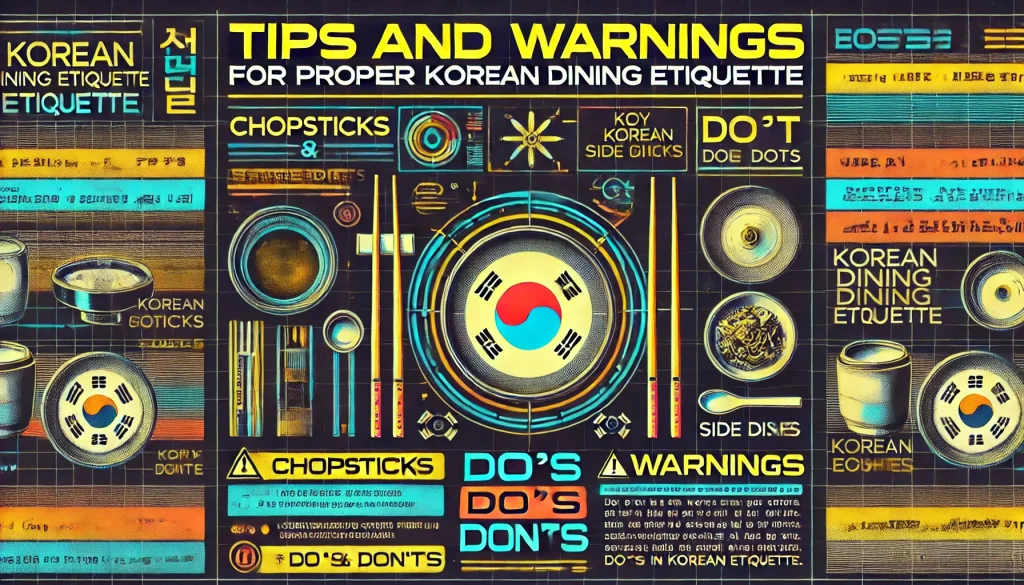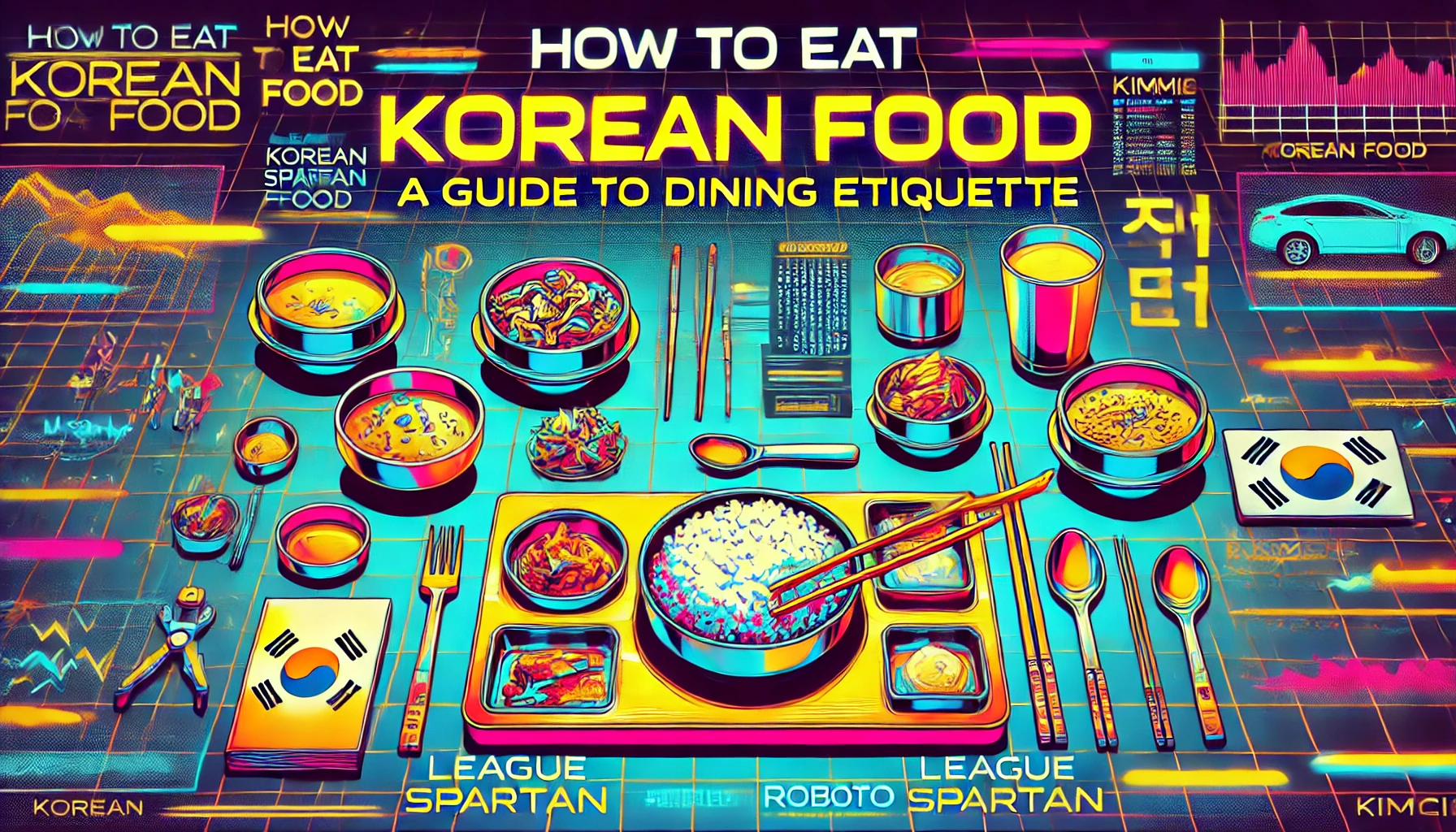Eating Korean food is more than just enjoying a meal; it’s an immersive cultural experience that offers insight into Korean traditions, community spirit, and etiquette. Whether you are a fan of K-culture or someone preparing to travel to South Korea, understanding how to eat Korean food with the correct etiquette can enhance your experience significantly. Following the right dining practices not only shows respect but also deepens your appreciation for Korean cuisine.
In this guide, we’ll walk you through the essential steps on how to eat Korean food—from understanding traditional table settings to mastering proper use of utensils. Let’s dive into the specifics of Korean dining etiquette, helping you enjoy the rich flavors and communal spirit that Korean cuisine has to offer.

Materials or Tools Needed

Before starting your Korean dining experience, there are some essential tools and materials you will need. Understanding these items helps you navigate the table with ease and respect cultural traditions.
| Item | Description |
|---|---|
| Chopsticks (젓가락) | The primary utensil used for eating solid food. |
| Spoon (숟가락) | Used for rice and soup. |
| Banchan (반찬) | Small side dishes served along with the main meal. |
| Rice Bowl (밥그릇) | A separate bowl for rice, typically placed to your left. |
| Soup Bowl (국그릇) | A bowl for soup or stew, typically placed to your right. |
Step-by-Step Instructions for
Step 1: Setting the Table
When you sit down to eat a traditional Korean meal, the table is already laid out with various banchan (side dishes), a rice bowl, and soup. Take note of the bowl positions—rice is typically placed on the left, and soup is on the right. The chopsticks and spoon are placed horizontally across the table setting. It’s crucial to remember this layout, as it plays a significant part in Korean dining etiquette.
Tip: Never place chopsticks directly into your rice bowl as this resembles a funeral rite. Always set them down beside your bowl when not in use.
Step 2: Beginning the Meal
Before starting, wait for the eldest person at the table to take the first bite. It is customary in Korean culture to allow elders to begin eating before the younger ones. This practice demonstrates respect. Once they start, you may proceed to enjoy your meal.
If you’re dining at a restaurant, you may hear “잘 먹겠습니다” (jal meokgetseumnida), which means “I will eat well.” It’s a polite way to acknowledge the meal.
Tip: It’s polite to engage in conversation, but make sure to chew with your mouth closed and avoid talking while eating.
Step 3: Using Chopsticks Correctly
In Korean culture, chopsticks are used for most of the solid food items, while the spoon is reserved for rice and soup. Hold the chopsticks about one-third from the top and use them to pick up side dishes (banchan) in small, manageable bites. Korean chopsticks are typically made of metal, which can feel different from wooden chopsticks. Practice beforehand to get a good grip.
Warning: Never point chopsticks at others, as it is considered impolite. Avoid using chopsticks to stir or poke at food, and never rest them across your bowl.
Step 4: Eating Rice and Soup
While you may be tempted to lift your rice bowl to your mouth (as is done in other Asian cultures), in Korean dining, it is more respectful to leave the bowl on the table and use your spoon to eat rice. The same goes for soup—use your spoon to drink the broth rather than lifting the bowl.
Tip: Finish all the rice and soup from your bowls as a sign of gratitude. Leaving food behind can be seen as wasteful.
Step 5: Sharing Dishes
Korean meals are served family-style, meaning many dishes are placed in the center for everyone to share. It’s common to use your chopsticks to pick from shared plates, but make sure to do so in a mannerly way. Only take small portions at a time to avoid being greedy, and never reach across the table—wait until the dish is passed or within reach.
Tip: Use the ends of your chopsticks to serve food onto your plate when sharing dishes, or ask for serving utensils when dining out.
Tips and Warnings

Dining in Korea involves several unwritten rules, and it’s easy to make a mistake if you’re unfamiliar with the culture. To help you avoid common missteps, here are some tips and warnings.
| Do’s | Explanation |
|---|---|
| Wait for the Elders | Always let the eldest person begin eating first as a sign of respect. |
| Chew Silently | Noisy eating is generally frowned upon, unlike in some other Asian cultures. |
| Don’t Hold Your Rice Bowl | Leave the bowl on the table instead of lifting it to your mouth. |
| Don’ts | Explanation |
|---|---|
| Never Point with Chopsticks | Pointing chopsticks at someone is considered rude. |
| Don’t Stick Chopsticks into Rice | This is reminiscent of a funeral ritual and should be avoided. |
| Finish Your Plate | Leaving food behind can be seen as wasteful and disrespectful. |
Conclusion
Mastering Korean dining etiquette takes time, but once you get used to the nuances, it becomes second nature. By understanding how to use utensils, respect table manners, and appreciate the communal aspects of a Korean meal, you can fully immerse yourself in the cultural experience. So next time you enjoy Korean food, whether in a restaurant or with friends, you can confidently follow proper dining etiquette, enriching your experience and showing respect for the culture.
FAQ
How should I hold my chopsticks when eating Korean food?
Hold your chopsticks about one-third from the top, using them to pick up food from side dishes or the main plate. Avoid holding them too close to the food end, as this can be seen as improper in Korean dining culture.
Is it okay to lift the rice bowl while eating Korean food?
No, unlike other Asian cultures such as Japanese or Chinese, it is considered respectful in Korea to leave the rice bowl on the table while eating. Use your spoon to eat rice instead of lifting the bowl to your mouth.
Why do Koreans eat family-style meals?
Koreans value community and sharing, which is reflected in their family-style meals. Sharing food is a way to bond with others and ensures that everyone gets to enjoy a variety of dishes.
Resources
- Michelin Guide. A Korean’s Guide to Dining Etiquette.
- Josephine Remo. Korean Food Culture.
- The Korean in Me. How to Eat Korean Food Properly.
- YouTube Video: How to Eat Korean Food.

